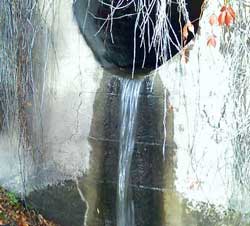Stormwater doesn’t match the traditional image of pollution. There are no factory smokestacks belching waste. Yet polluted stormwater packs a punch. Runoff from streets and highways is the number one source for petroleum and other toxic chemicals that wash into the Northwest’s rivers, lakes, and bays. Sightline’s report, Curbing Polluted Stormwater and Creating Communities, looks at the challenges we face and the opportunities we have to clean up our waterways.
Curbing Polluted Stormwater and Creating CommunitiesWant Sightline’s latest research?
Sign up for daily, weekly, or monthly emails.
Included in the report:
- What we’re up against: Ten bathtubs full of water pour off one average-size house during a storm. Cities like Seattle and Portland have hundreds of miles of storm-drain pipes and thousands of storm drains and catch basins. Sometimes the stormwater system simply backs up, flooding streets and basements.
- Stormwater’s costly and toxic cocktail: In all, a typical year in Portland or Seattle, approximately 26,600 gallons of stormwater rush into gutters and streams from a single home—bringing a host of chemicals and pollutants with it. The toxic cocktail is a threat to our drinking water and marine wildlife alike.
- Smart, local solutions for polluted runoff: Cities throughout the Northwest are taking on the stormwater pollution problem by creating natural drainage systems–part of a movement called “low-impact development,” or LID. By replicating nature’s way of managing rainfall, cleaning up stormwater is both less expensive and more efficient than conventional sewer systems.
Sightline’s Curbing Stormwater Pollution is written by Sightline journalism fellow Lisa Stiffler.
Media Contact: Eric Hess, erich@sightline.org, 206-447-1880 ext.111
More Information:








